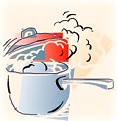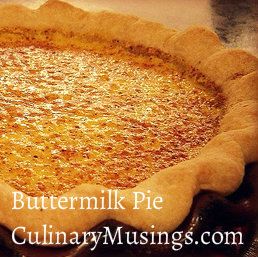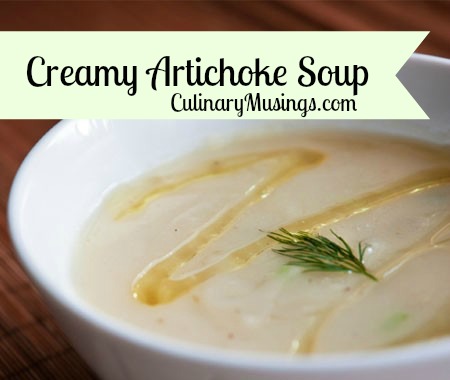A little home cooking helps beat the "Freshman 15"
College students and their families expect large expenses like tuition, books, lab fees, and housing. But what family factors in the cost of a new wardrobe when calculating college costs? Most should. Studies show that college weight gain is so common that it has a catchy name: the "Freshman 15."
On their own for the first time, college students are suddenly free to eat as much as they please. Mom may try some long-distance nagging about nutrition, but who's paying attention? Drunk on freedom (or other substances), many college students develop bad habits that lead to extra pounds.
Depending on the school, your student may be lucky enough to have a living arrangement that includes a kitchen. If so, make sure he leaves home with the tools necessary to do something besides warm up leftover pizza.
10 Necessities for the College Kitchen
Here, in no particular order, are 10 suggestions for your college student's culinary survival kit:
1. Two small plastic cutting boards.

Plastic is lightweight, easy to clean, and goes in the dishwasher. Plastic cutting boards are also easier on knife edges, so knives stay sharp longer. Get two different colors and label one for meat and one for vegetables and cheese. Stress the importance of keeping them separate! A case of Salmonella really cuts into study time.
2. Two sharp knives.
Get one small paring knife for peeling and a larger knife for chopping and slicing. Good quality, carbon stainless alloy knives are more expensive, but worth the cost. They'll hold their sharp edge longer and resist rust and stains.
3. Heavy-bottomed, non-stick frying pan with a lid.
Any cook, but especially an inexperienced one, will get better results from a heavier-gauge pan because it heats more evenly and holds heat better. That makes it easier to brown and fry foods without burning them. A 12-inch high-sided frying or sauté pan is a good, all-purpose piece.
Non-stick coatings require less oil and are easy to wash – making it more likely the student will actually wash dishes!
4. Two sauce pans with lids.

A one-quart size is perfect for heating a can of soup, beans, or pasta sauce for one. A 3-4 quart size is good for cooking pasta, macaroni and cheese, or meals for more than one person.
5. Nine-inch square baking pan. This is good for small casseroles and baked meats. The glass makes it easy to heat the leftovers in the microwave. And just as important, how else will they cook the brownies?
6. Two glass measuring cups.
These aren't just for measuring! The larger size doubles as a mixing bowl. Glass is microwave-safe, so they can also be used to reheat and cook simple microwave meals – like the ubiquitous ramen noodles. The larger size helps prevent the boil-overs that turn many microwave ovens into mini-Superfund sites replete with splatters and caked-on remains of many burned dinners.
7. Small insulated baking sheet. This is perfect for those slice-and-bake cookies – or even for the homemade variety if the student gets really ambitious. The insulation on the bottom of the sheet helps the food bake evenly instead of having cookies that are burned on the bottom and raw on top.
8. Basic utensils.
 This list includes a plastic spatula (so it can be used on the baking sheet and in the non-stick frying pan), wooden or plastic stirring spoons, small cheese grater, and a pasta serving spoon.
This list includes a plastic spatula (so it can be used on the baking sheet and in the non-stick frying pan), wooden or plastic stirring spoons, small cheese grater, and a pasta serving spoon.
9. Colander. This is useful for washing vegetables and preparing salads. It's essential when draining pasta or anything else cooked in boiling water. The alternative – using the pot lid to drain the water slowly – often results in either burned fingers or the entire dinner washing down the drain.
10. Microwave safe bowls with lids. Get a couple in different sizes. They're great as mixing bowls and for storing leftovers. Plastic bowls are much lighter than glass, but make sure they're microwave safe.
"So, How Do I Make…?"
Even with the tools at hand, your student may be reluctant to do much besides heat up a frozen dinner. Even if he or she longs for home-cooked comfort food, it's easier to gorge on pizza and pastries than figure out how to cook a full meal. Make it easier by putting together a special gift: a personalized cookbook with your child's favorite foods.
 It can be as simple as a loose-leaf binder with typewritten recipes or a more elaborate book filled with handwritten instructions. The important thing is to not assume anything! You child loves mashed potatoes? Start the instructions with how many of what type of potatoes to use, how thin to slice them, and how long to cook them.
It can be as simple as a loose-leaf binder with typewritten recipes or a more elaborate book filled with handwritten instructions. The important thing is to not assume anything! You child loves mashed potatoes? Start the instructions with how many of what type of potatoes to use, how thin to slice them, and how long to cook them.
No beginner cookbook from the bookstore can match the personalized version full of Mom and Dad's unique methods and ingredients. That simple book could become a family heirloom.
These precautions may not keep your student from overeating at college, but may help instill better, healthier eating habits during an exciting, but stressful time of life.





